Of everything on the rucksack pack list, your hiking stove is the essential bit of kit for every lightweight trip. Transforming the raw to warm and the dry to rehydrated, it becomes a comrade on a solo escape and just another mate on a group getaway.
In this blog, we touch on two types of hiking stoves, offer tips on how to make the most of their respective features, and list our top ten best-selling hiking stoves for 2025 based on the past 12 months of sales data.
Let’s crank the heat!
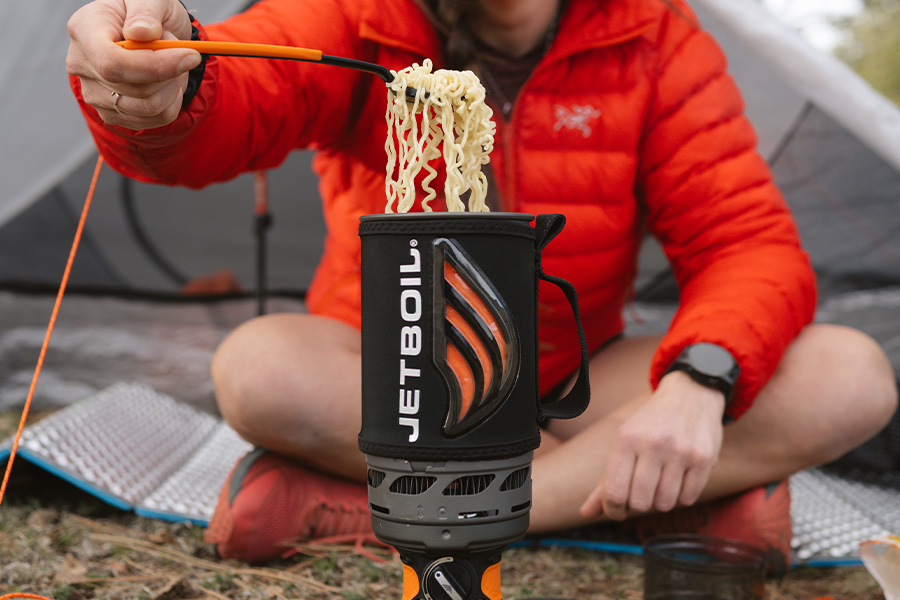
A hiking stove becomes a comrade on a solo escape and just another mate on a group getaway. Image: JetBoil
The Liquid Fuel Stove
Fuel
Stoves such as those by Trangia generally burn an alcohol-based fluid like methylated spirits. Others such as the WhisperLite International Multi-Fuel Stove by MSR operate with both Shellite and unleaded fuel.
Pack this fuel separately in a dedicated fuel bottle, labelled accordingly and tightly capped to prevent spillage.
Quantity of Fuel
This depends on the frequency of use – but 600mL methylated spirits for a 2-3 night hike should suffice. For the WhisperLite, for example: roughly 28mL of white gas boils just over 1L of water, while the same volume of kerosene boils just over 1.5L.
Operation
This is simple: first, decant a small volume of fuel into the stove’s fuel well (which looks a bit like an old ink well). This then sits in the stove’s body. Light the fuel with your lighter, and place your pots, pans, or kettle on top. The flame’s heat is adjusted using a small attachment, which limits its size.
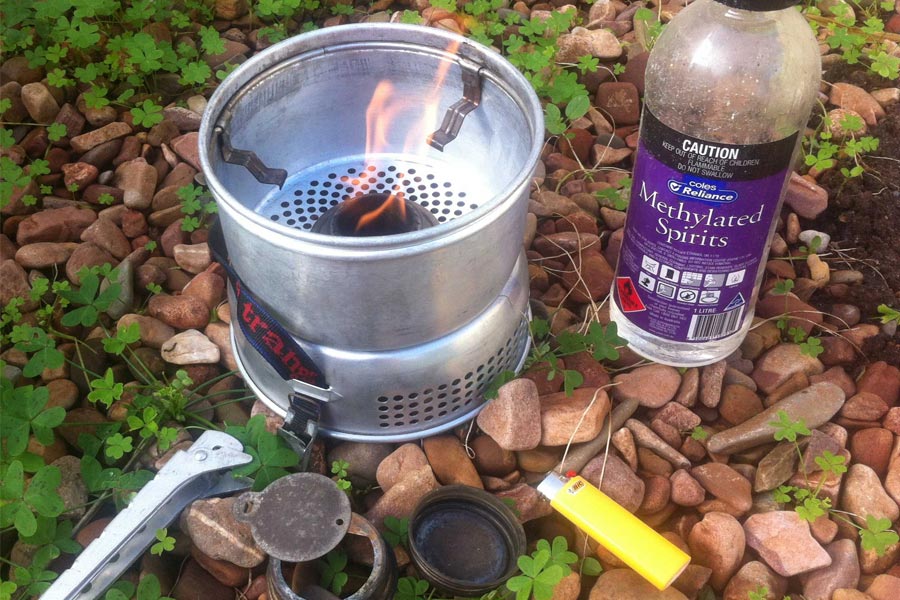
The flame’s heat is adjusted using a small attachment. Image: Peter Inverarity
Pros & Cons
The advantages of these stoves includes the ability to see and measure your remaining fuel, the quiet flame, and the ability to ‘water down’ your fuel to extend it’s life. Anywhere up to 30% of water still works. The flame is ‘natural’ looking, compared to gas – and this makes for better company if you can’t have a fire!
Disadvantages include the occasionally clumsy attachment, which limits the size of the flame and needs practice in use. The energy provided by the flame also isn’t as much as that provided by gas; you’ll likely wait a lot longer for your billy to boil!
As for stoves that operate with Shellite, these work well in any climate or altitude. That said, they tend to be complex to use, as reverberant as a jet engine, and fail to produce a pleasant, soft flame.
Summary
The ol’ primus stove is great for learning the basics of lightweight cooking using a relatively safe and reliable system.
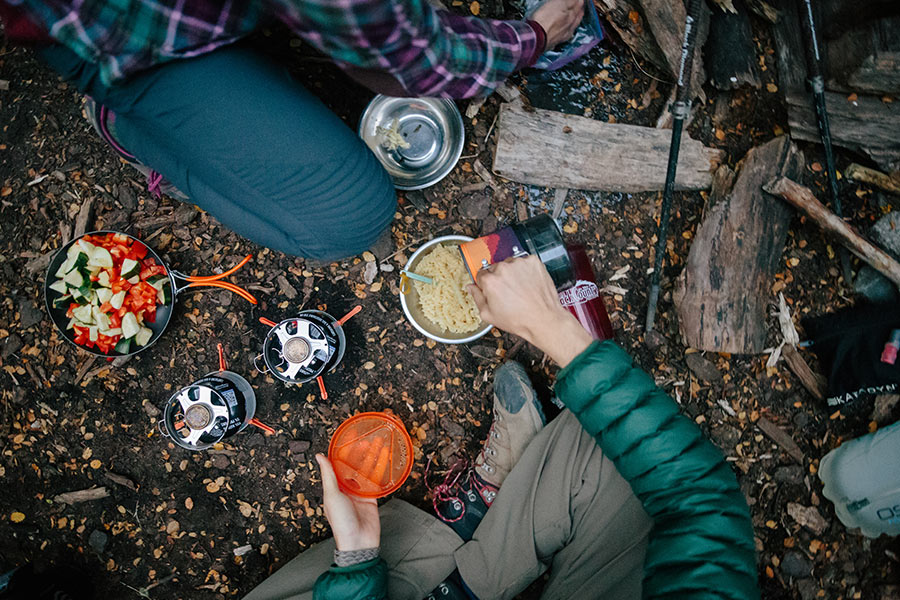
For a 3-night trip, a 230g canister for meals and 100g canister for hot drinks should still leave some fuel remaining. Image: JetBoil
The Gas Stove
Fuel
The gas consists of around 75% Butane and 25% Propane. This combination allows a mostly-liquid state of flammable fuel under pressure in the canister, which vaporises as it exits. In theory, the Propane is supposed to provide better performance in sub-zero temperatures. In reality, it’s better to keep your canister warmer than that. More on that later.
Quantity of Gas
Commonly, canisters are 230g (small) and 450g (large). Smaller 100g canisters are also convenient for keeping inside a Trangia kettle – easy to locate for a quick cup of tea on the track.
Lifespan
For a 4-day, 3-night trip – 1 x 230g canister for cooking a meal and hot drinks, and 1 x 100g canister for other hot drinks should still leave some fuel remaining in the 100g canister.
That said, it’s recommended to shake your cannister before using to gain the most from them, and keep them warm (body temperature).
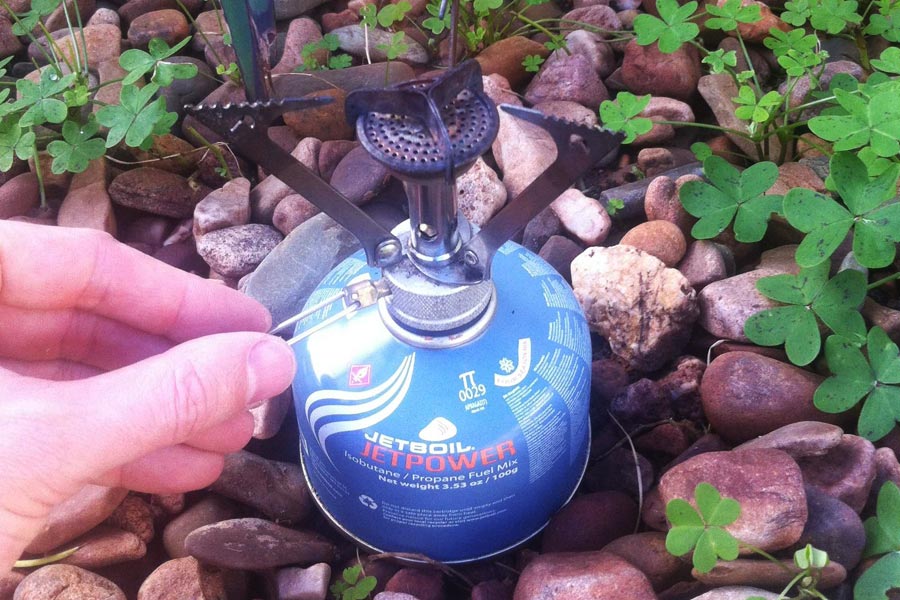
Once you go gas, you won’t look back! Image: Peter Inverarity
Operation
Simply screw your burner onto your gas canister. Most burners look like a tiny showerhead with three prongs radiating out to support your cookware. Turn the gas on using the adjustable knob, and ignite with your lighter.
You can then adjust the heat of your flame by rotating the knob, much like on your cooktop at home.
Pros & Cons
Once you go gas, you won’t look back!
The biggest advantage is the quick, hot flame, which makes cooking a breeze. It’s also super easy to adjust the heat for boiling or simmering, while setup is convenient without the need to decant (as with primus stoves).
That said, there is an element of risk in not knowing exactly how much gas you have left in your canisters. When in doubt, over-cater for your gas until you’re confident in how much you use each time.
Summary
While gas flames can be said to spoil the serenity, they can also create a sense of comfort. Somewhere out there, you’ve made it!
Regardless of which stove you choose, keep it clean, maintained, and in good working condition. Check it over before packing into your rucksack. From the solo treks to the summit, to the humble blaze boiling the cuppa for banter between mates – a hiking stove makes for good company on those great escapes.
It’s a bit like the Ford vs Holden debate; at the end of the day, the choice in stove really comes down to personal preference. With that in mind, let’s take a look at the top ten hiking stoves for this year, based on our sales data:
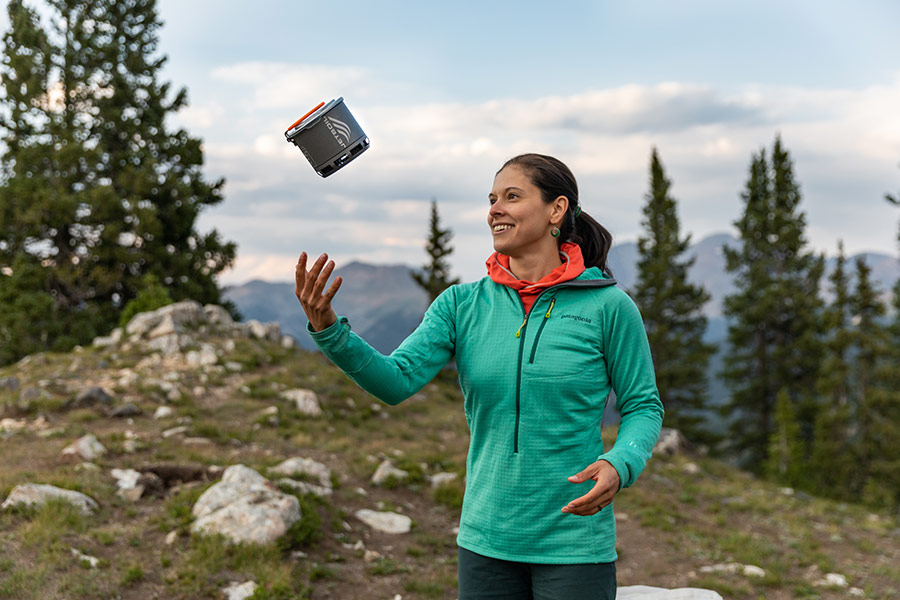
Save weight on the heavy endeavours! Image: JetBoil
Best-Selling Hiking Stoves for 2025
10. MSR Whisperlite International Multi-Fuel Stove
Guaranteeing hot grub for the go-getters of the gradient and the all-round globetrotters of the trail – the MSR Whisperlite International Multi-Fuel Stove has rightfully earned its high regard in the backpacking stove category.
Multi-fuel, this stove enables hungry hikers more cooking power through its flexible fueling from shellite, kerosene, or unleaded fuel – ideal for use in extreme environments, from the heat to the sleet. Control the pressure in the separately available fuel canister, for a fierce flame irrespective of climate or altitude.
Manufactured with stamped stainless-steel legs to save weight, this stove also features a self-cleaning Shaker Jet which, with some simple regular maintenance, can offer decades of outdoor reliability.
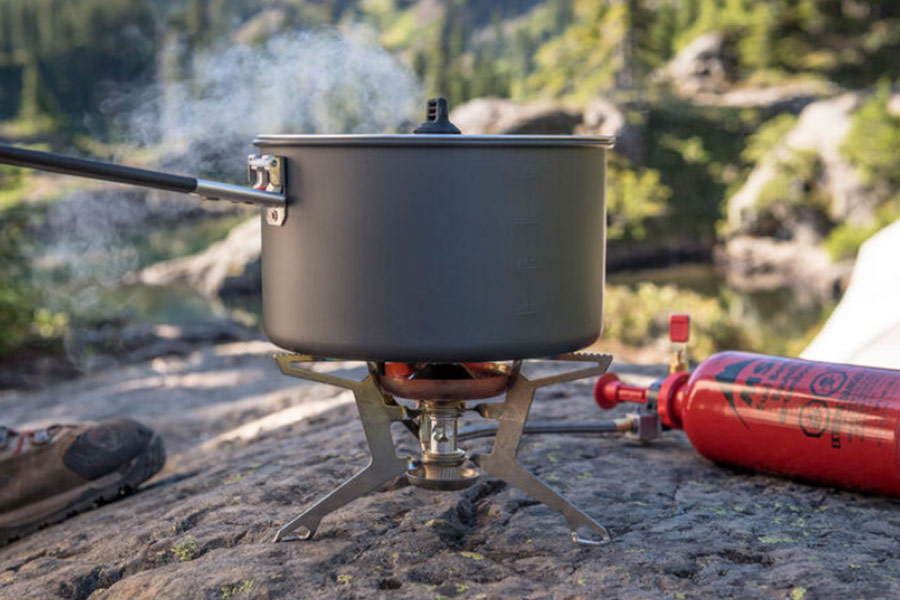
The Whisperlite International is ideal for use in extreme environments, from the heat to the sleet. Image: MSR
9. JetBoil MiniMo Stove & Pot Support
Lift your degustation game with lightweight performance that’s heavy on convenience: the JetBoil MiniMo!
Well-designed and constructed from hard-anodised aluminium, with sufficient regulator technology – operate the stove with superior simmer control for those ready-made meals at the summit. Ergonomically shaped to allow easy scooping from a low angle, the stove pot houses the burner – plus, like the Zip and Sumo siblings, features a drink-through lid and dual-purpose measuring cup that protects the pot base.
Fit with robust metal handles so you can get a grip on your grub – the JetBoil MiniMo Cooking System may have dropped a few ranks from number 6 last year, but is still as fast, light, and versatile.
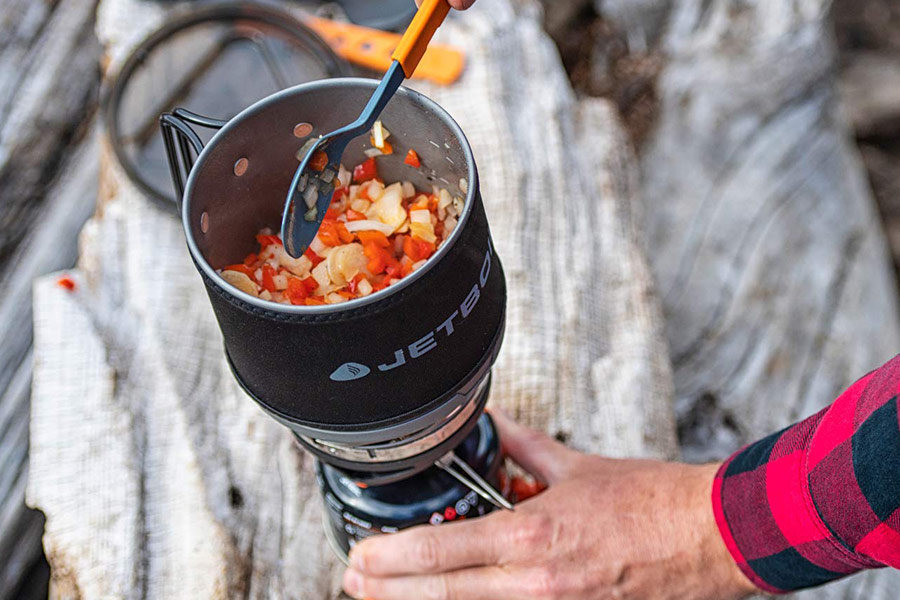
Fast, light, and versatile. Image: JetBoil
8. JetBoil Stash Cooking System
The lightest in the JetBoil range, the Stash Cooking System is a peak-performing gadget for the gram-counters of the gradient.
Comprised of a FluxRing cookpot and a stand-alone stove, all components nest together with a separately available 100g JetPower fuel canister for compact storage. Complete with a handle for easy pouring and a lid for tidy use in the field, this system feature’s JetBoil’s FluxRing technology for boiling water in just 2.5 minutes – ideal for rehydrating dinners at the summit, or kicking back with a cuppa on the side of the hike track. A fuel stabiliser also secures the system as a whole on the ground.
Save weight on the heavy endeavours with the JetBoil Stash Cooking System.
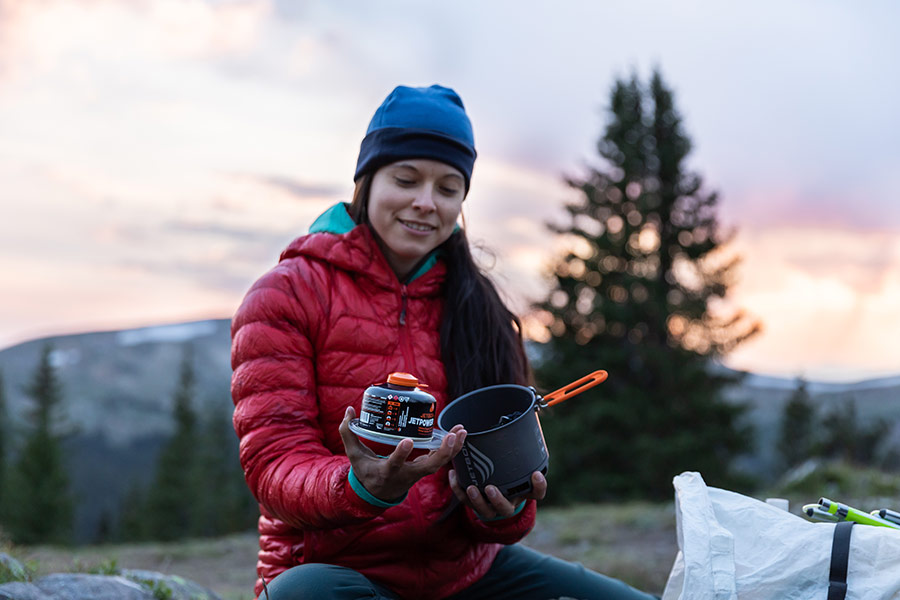
A peak-performing gadget for the gram-counters of the gradient. Image: JetBoil
7. JetBoil Sumo Hiking Stove
From hungry hiking duos to famished foursomes – the Sumo by JetBoil is new to this year’s rank, and the beefy big brother of the aforementioned MiniMo! Boasting a generous 1.8L pot capacity with hard-anodised aluminium construction for both weightlessness and kick-butt durability, this cooker tackles big-group hunger with gusto. Store either a 100g or 230g fuel canister inside the pot for a compact, all-in-one cooking system. Push-button ignition makes for efficiency, while the improved valve and regulator deliver unparalleled simmer control in climates as frosty as -6°C. Enjoy superior heat retention with the insulated cosy wrapping the pot, and benefit from the versatile, drink-through lid that doubles as a measuring cup. For steadfast stability on uneven terrain, the included stabiliser cleverly clips into the lid during transit, while the burner slips into its velvet bag to protect your pot’s interior.
The JetBoil Sumo stands tall and cooks big for those fast and light missions.

The JetBoil Sumo stands tall and cooks big for those fast and light missions. Image: JetBoil
6. Coleman Peak 1 Trekking Stove
Stripped of the unnecessary and embellished with essentials – Coleman’s Peak 1 Trekking Stove is efficient without the excess fuel.
Owing to serrated pan supports, your pot of porridge stays put! This stove ignites with a simple strike of the humble match, delivering simple, minimalist meals for roadside camping or compact, portable, one-pack hiking.
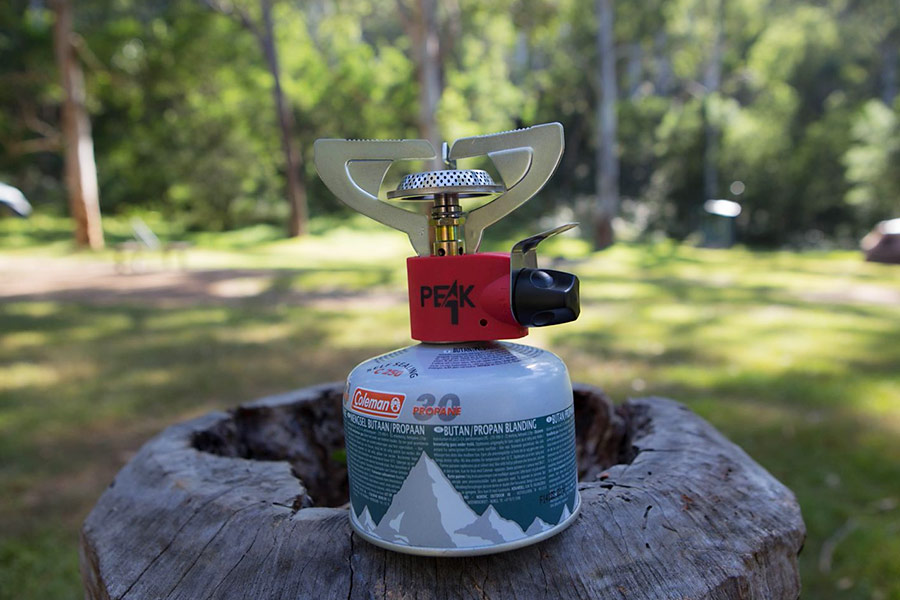
Delivering simple, minimalist meals for roadside camping or compact, portable, one-pack hiking. Image: Coleman
5. JetBoil Flash Hiking Stove
The JetBoil Flash Personal Cooking System slays the slopes with you on every outdoor adventure; a compact, packable, and lightweight package that warms wholesome eats and heats hearty drinks with true reliability.
Once again, JetBoil’s FluxRing technology boasts fast boil times, while a cup clips securely to the stainless steel burner and a fuel can stabiliser ensures security on tricky cooktops. Push-button ignition and adjustable flame control guarantee ease of use, while a colour-changing heat indicator in the insulated cup cosy reveals when your contents are hot. As all-in-one as they come, eat straight from the cup for crockery convenience, while an integrated spout in the lid allows a simple storage solution in transit.
For a cooker as compact as it is feature-packed, the JetBoil Flash Personal Cooking System fast-tracks you straight to those sunset dinners at the summit.

As compact as it is feature-packed, this stove fast-tracks you straight to those sunset dinners at the summit. Image: JetBoil
4. JetBoil Zip Hiking Stove
Compact but action-packed, the JetBoil Zip is considered the stark version of the Stash – incorporating essential features in a stripped-down design for the pared-back, fast-tracked solo adventurers.
Its insulated 800ml cooking cup features JetBoil’s FluxRing technology for fast boil times. The simplified, adjustable burner requires only a match or flint for ignition, fit with a lid featuring both a strainer and a pour spout for cooking convenience. Set to slay with a fuel can stabiliser and a protective base cover that doubles as a measuring cup, the JetBoil Zip is compatible with all accessories, boasting a no-frills, on-the-go cooking system that doesn’t beat around the bush.
A no-frills, on-the-go cooking system that doesn’t beat around the bush! Image: JetBoil
3. MSR Pocket Rocket Deluxe and Pocket Rocket 2 Hiking Stoves
Boasting all the premium features common to each other, PocketRocket Deluxe Stove and PocketRocket 2 could be considered brothers.
At just 83g, the Deluxe is slightly heavier than the PocketRocket 2, with a larger burner head that improves both heat distribution and simmering. As the most durable MSR lighters, the burner protects the push-start piezo ignition – and owing to its internal pressure regulator, this stove withstands a wide range of temperatures and maintains a fast boil even in cold climates. Plus, a lip around the burner shields from windier weather.
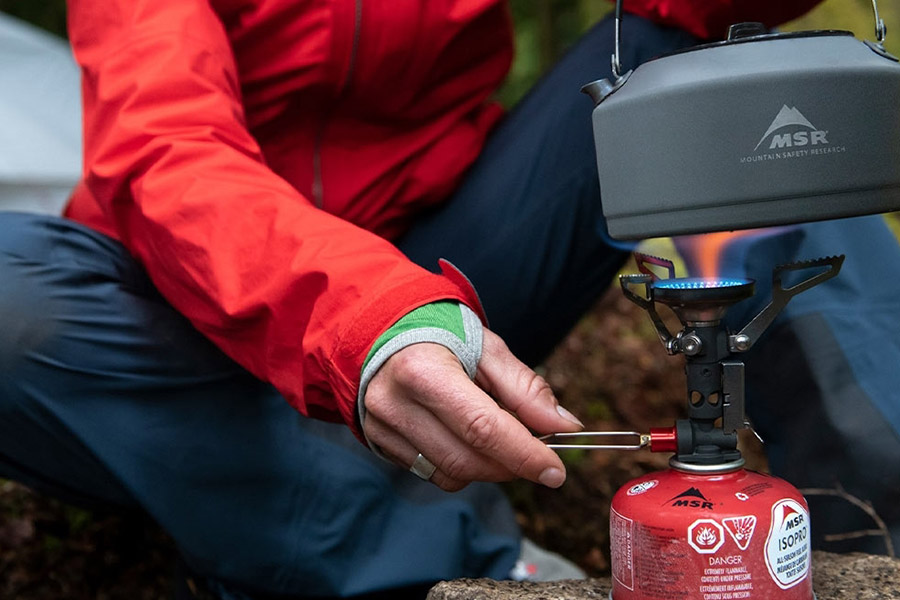
The MSR PocketRocket Deluxe is big on the burn and small on size. Image: MSR
For the trailblazers, flavour cravers, and space savers – the MSR PocketRocket Deluxe is big on the burn and small on size. The PocketRocket 2 Hiking Stove delivers warm meals and hot drinks to hikers, bikers, and bushwalkers across the world. Fashioned with features like precision flame control, the WindClip windshield, a fast boil time, and efficient fuel consumption – this cooking comrade is smaller, lighter, and more compact than the original PocketRocket stove. Pot supports enable the small packed size too, meanwhile accommodating a wide range of pots and pans.
From the adventure seekers to the outdoor retreaters – the PocketRocket 2 Hiking Stove is the dependable companion on the ups, dips, and drops!
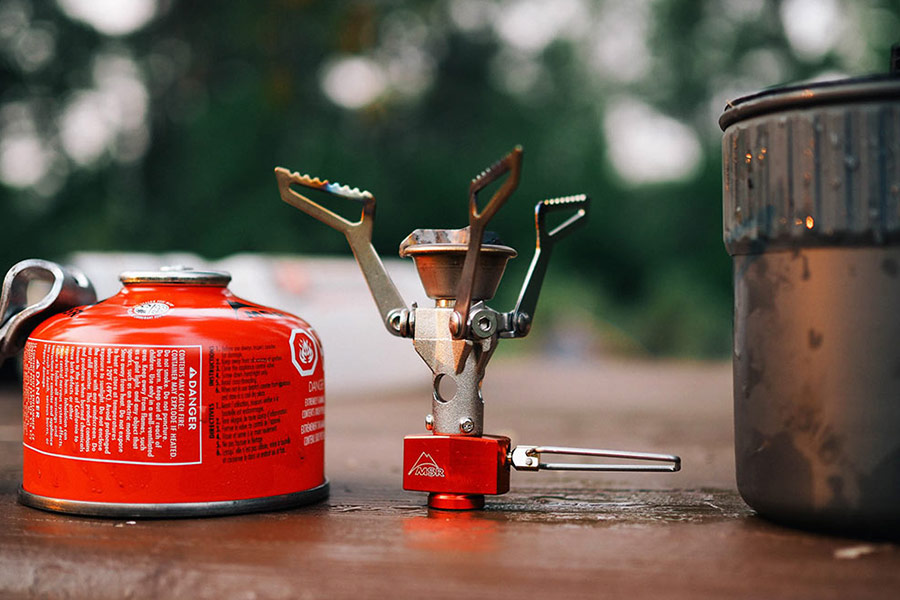
Fit for the adventure seekers and the outdoor retreaters! Image: MSR
2. JetBoil Genesis Basecamp Backpacking and Camping Stove System
In 2024, this degustation station was both new to the rank and our top seller – but whilst it now sits humbly as our runner-up (by less than 50 sales!), it still maintains a high level of popularity. It’s the Jetboil Genesis Basecamp Stove System!
This all-in-one, all-star camp champ comes with a non-stick ceramic 10-inch Fry Pan, Flux Ring 5L Camp Pot, and carry bag. From melting snow to brewing joe, its impressive 10,000 BTU heating system caters for any kind of tea break. Construct a gourmet, trackside creation, and stow away snug into the included carry bag.
Bolster that wholesome post-hike grub beyond the dining table with the Genesis Basecamp Stove System by JetBoil – also available in the HalfGen model.
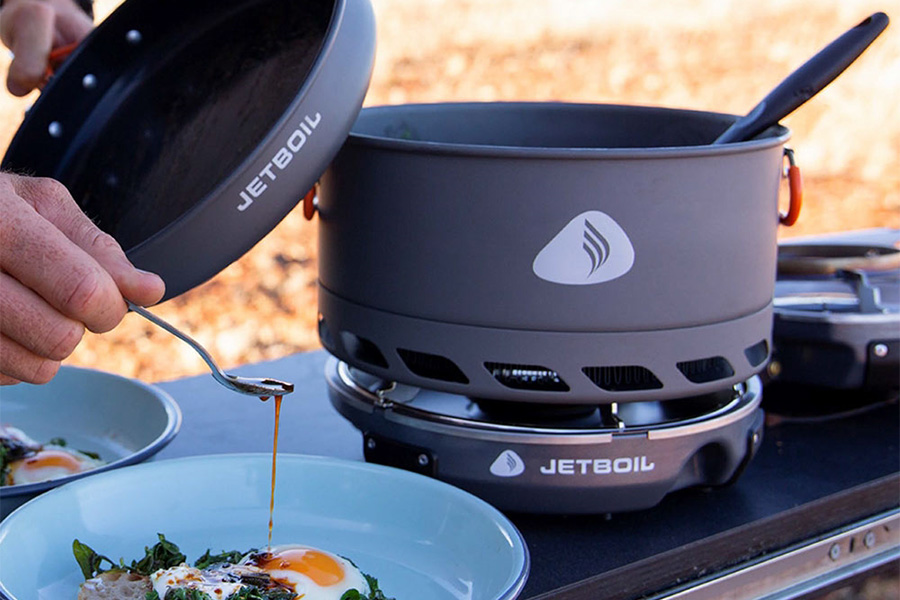
Bolster the wholesome post-hike grub beyond the dining table. Image: JetBoil
1. Trangia Mini Trangia and Aluminium Stoves (Small UL, Small UL HA, and Large UL)
Taking out the gold medal for 2025 is, ironically enough, an aluminium number – the range of aluminium stoves by Trangia!
From little things, big things grow – so lets start small. For the fast-paced space saver, the Mini Trangia Stove streamlines cooking efficiency to a new level. With a minimal design and a lightweight aluminium construction, this stove set comes with one saucepan, a non-stick lid or frypan, spirit burner, and windshield. Be it a one-pot wonder or a dehydrated dinner, this stove set is also complete with a handle for convenient, hands-on cooking without the burn! Its simplistic design bodes especially well for multi-sport activities, rapid expeditions, and lightweight missions; the ultimate cooking system a solo hiker can count on. As for the standard sized stoves, these hot-shots boast their high ranking based on the number of sales across all models; the standard ultralight aluminium models are the most popular.
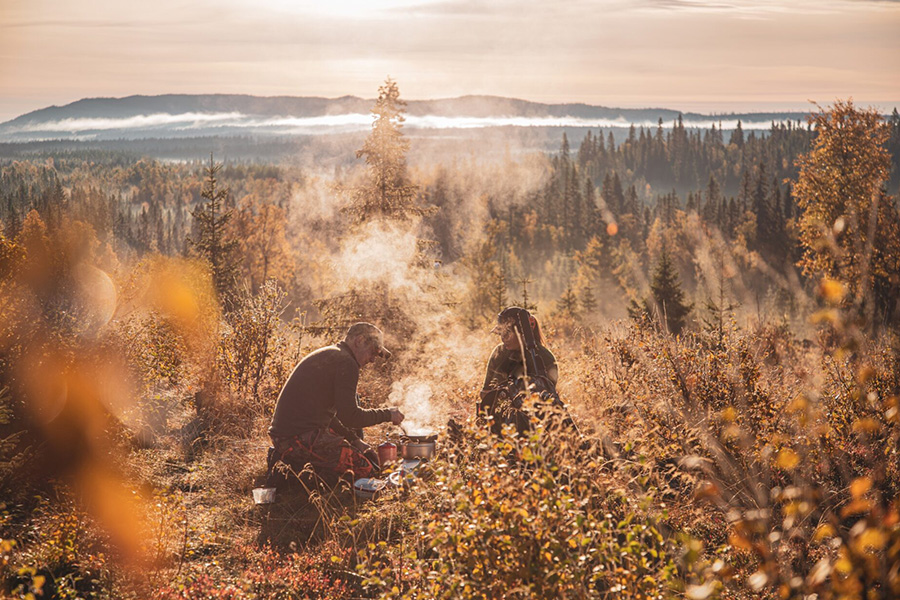
Simple, reliable, and designed with an eye for quality. Image: Trangia
From the hiking pack to the side of the track – hard-anodised (HA) componentry has the Small 27-7 Ultralight HA Trangia Stove the ultimate balance between affordable and durable. Despite a more sizeable model, the Large 25-1 HA Trangia Stove boasts a classic yet uncomplicated design that’s just as suited to the minimalist hikers. With hard-anodised cooking and eating surfaces, they’re not only easier to clean and resistant to wear and tear, but boast more corrosion-resistance than their untreated counterparts. Complete with two saucepans, a frypan, and a pot grip for more effective handling – the Trangia aluminum stoves are easy to both set up and operate, sending even the most simple of pathfinders beyond standard, dull, rehydrated dinners. A two-part windshield protects your flame from wind and frosty conditions, while an easy-to-light spirit burner and simmer ring allow both control and extinguishing of the flame.
Simple, reliable, and designed with an eye for quality – the Trangia Aluminium Stove systems are hot-to-go for the solo hikers or minimalist couples at the summit.
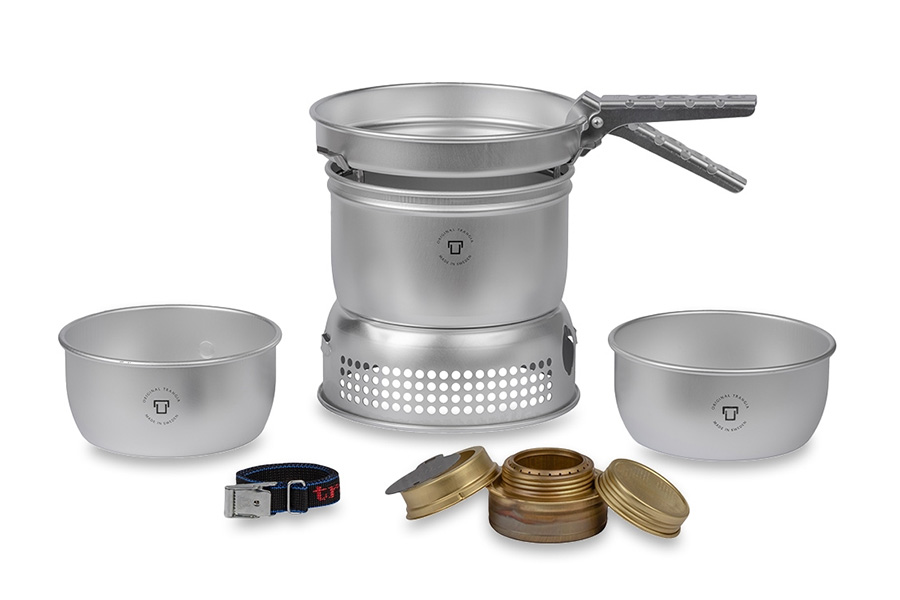
From the hiking pack to the side of the track. Image: Trangia
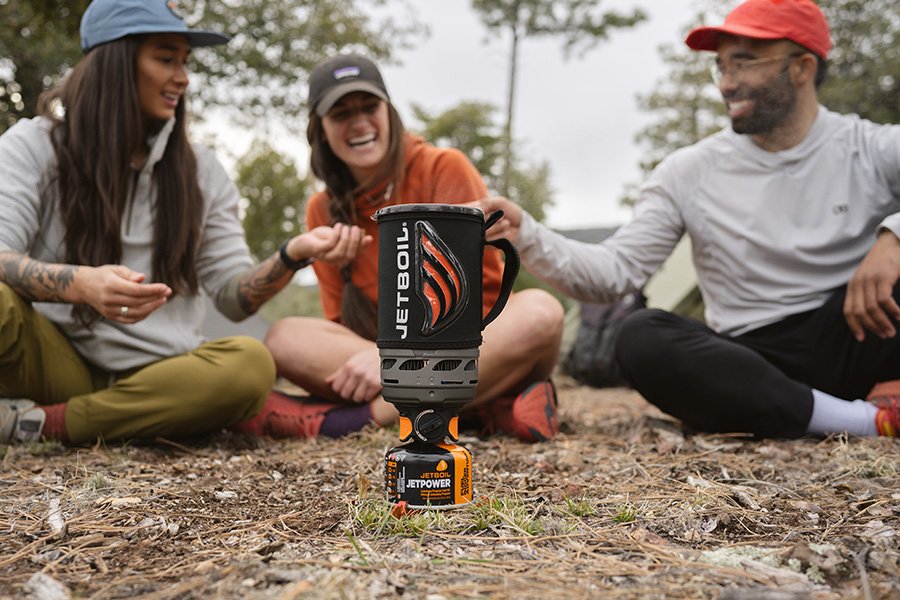
For food and fuel as fast as you! Image: JetBoil
What to Watch:
JetBoil Flash 1.0L
For food and fuel as fast as you, the upgraded Flash 1.0L by JetBoil fashions your rations with a powerful blend of superior heating technology and a super lightweight body!
Boasting a generous 1L-capacity cook pot and a 2-minute boiling time, achieve fast heat in the flick of a flame with the quick, turn-and-click ignition for efficient starts, and monitor the water temperature thanks to the colour-change heat indicator. As compact and clever as it is versatile, the bottom cover offers dual use as a measuring cup or bowl too – with locking indicators, measurement makers, and an insulating cosy for a warm, comfortable hold too.
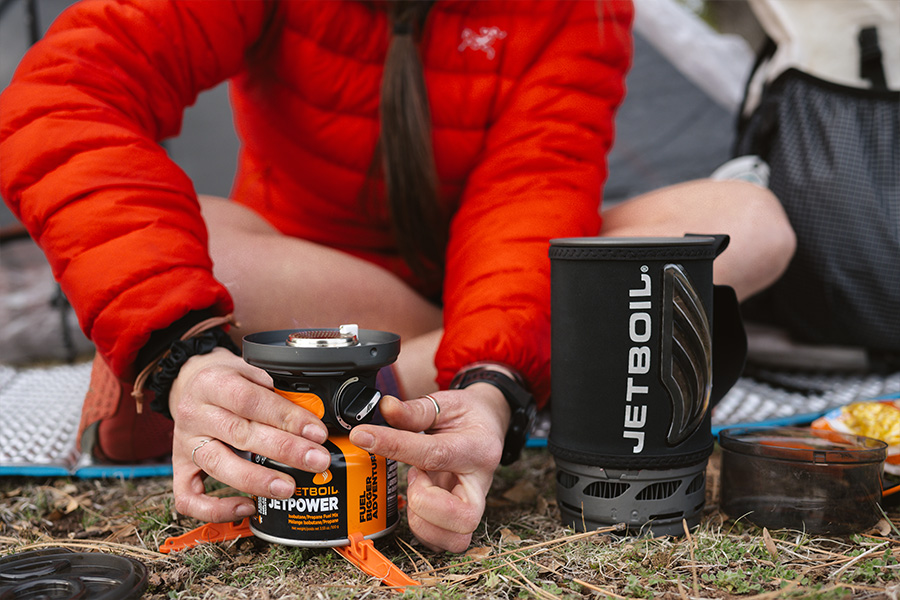
As compact and clever as it is versatile! Image: JetBoil
JetBoil Zip 0.8L
Compact yet feature-packed for outback boiling and bolstering backcountry feeds – keep calm and cook on with the fresh, new, fast, and light JetBoil Zip 0.8L!
A classic and simple stove with generous 0.8L-capacity cook pot and a 2-minute boil time for essential cooking needs on the trail, the Zip 0.8L gets the grub going 30 seconds faster than the original Zip – so you can replenish your adventure energy sooner. Just like the orginal Zip, its bottom cover offers dual use as a measuring cup or bowl, with both positional and locking indicators for a secure fit and measurement markers for accurate rationing. For low temperatures at the highest peaks – handle the heat with a textured grip zone, and enjoy a warm, comfortable hold with the insulating cosy too.
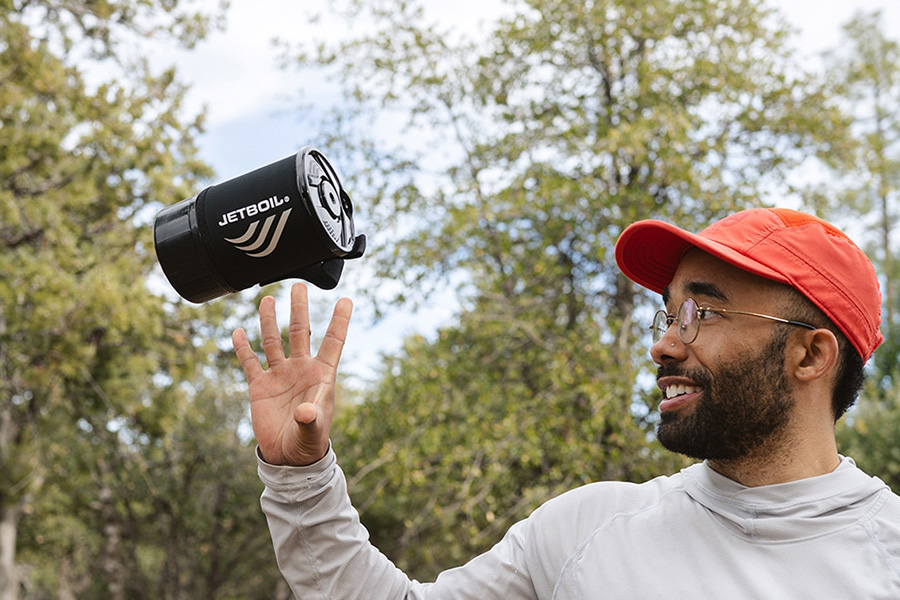
A classic and simple stove with generous 0.8L-capacity cook pot. Image: JetBoil
Ben and Lauren also discuss hiking stoves on the Snowys Camping Show:
What is your setup for cooking on the trail? Let us know in the comments section below.
When it comes to camping, hiking, travel and adventure – the Snowys team have all the expert advice, guides, and tips on everything outdoors.
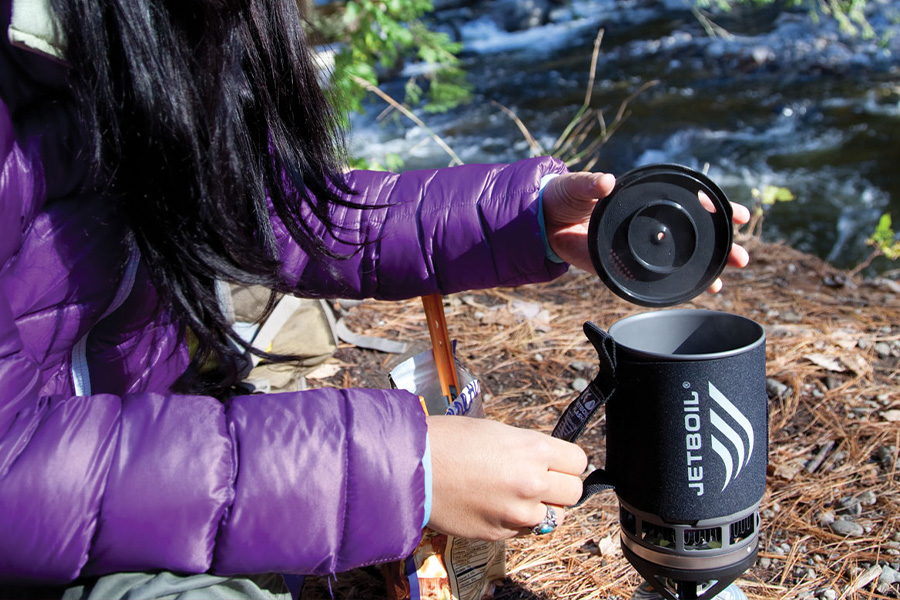
Who is lugging around a Jetboil Genesis in their backpack?
What an insightful article on the best hiking stoves of 2023, Snowys team! While the ease and efficiency of these portable stoves can’t be overstated, one underrated piece of gear I find just as essential is a sharp kitchen knife. Just as a reliable stove transforms the raw to warm, a sharp knife can make all the difference in prepping meals in the great outdoors.
Whether dicing vegetables for a hearty stew or filleting fresh fish by the campfire, a sharp knife reduces preparation time and effort, making for a safer and more enjoyable cooking experience. Plus, it amplifies the satisfaction of a well-earned meal under the stars.
Paired with one of these top-tier stoves, a sharp kitchen knife elevates outdoor cooking, turning it from merely functional to truly delightful. It’s these little things that take an outdoor adventure from good to great. Happy hiking (and cooking) everyone!
Just Knives
Glad to see Trangia still up there on the list, but the gas burner for them surely has to get a mention? Totally transforms the trangia experience, it’s amazing! I’ve tried a lot of different setups and for people who like to cook (i.e. Not just boil water) there’s no better option IMHO.
Hey Thomas, thanks so much for your insight and feedback! We’re glad you’ve now got a kick-butt camp kitchen setup – Trangia are excellent.
Happy camp cooking!
Hard to beat wind proof design of the trangia when cooking outdoors.
Gas and shellite burners are now available for trangia stoves which could be worth a try.
The Trangia stove is certainly a classic, TN! We’d love to get those options in at some point but we just don’t know what the timeframe on that would be. For anyone interested in more info, Trangia has a guide to the different burner options which you can check out here. Cheers, TN!
its hard to beat alcohol burners due to how simple and well made they are i found they work heaps better if you make your own stand and windshield,there are many different type stainless steel and brass burners on the market now,my trangia burner is 20 years old and still going strong,it also stays alight in extreme winds due to my home made shield,best part is you know how much fuel is left
Hi Peter, now that you have joined the 20th century with gas you might consider a Jet Boil for light weight travelling.
At first I was reluctant to spend the $110 for another gadget but having seen how well they performed in windy conditions I thought I would give it a go. Since then it has become the regular stove for morning tea stops or an additional stove in the evening. Out side of these times we always cook on an open fire and enjoy the ambiance of sitting around the bush TV.
On the subject of pressurised liquid stoves these were a great innovation at the time as you could burn a wide range of fuels. However old stoves had the nasty habit of leaking once pressurized and alight. The resulting fire could quickly get out of hand as they were difficult to shut down or to smother.
Cheers
Jetboil stoves are awesome, and you have a good point regarding liquid fuel stoves, you need to keep them maintained.
I have just acquired an old kerosene stove from my grandfather. I think it’s from some time in the 50’s or 60’s. It has a brass tank which you put your kero in, a little pump on the tank to pressurize the fuel and then the burner all in a neat little tin. You have to get it warm first though by burning a bit of metho underneath the burner before turning the actual stove on.
Fiddly and more time consuming than gas I suppose, but it’s an enjoyable and nostalgic process. I guess there’s some sentimental value there too.
That’s fantastic, Alex! If it’s still working 50 years later, it must be made of the right stuff. I wish the same could be said for some of my hiking gear, but I somehow doubt it…. :). It’s got me thinking – a museum to preserve and chronicle the changing face of camping in Australia would certainly be of interest to many, I think…
Hi Peter,
Well written, I still have both options in cooking, Trangia has a great advantage in cooking close to tents or in the vestibule. I once did a soup in the rain in the tent, not recommended by anyone. Nice coverage of the options. I like your writing style, hip and factual is a nice blend.
Environmentally we have come a long way, 50 years ago a stove was a box of matches!
Cheers
Thanks for your comment, David.